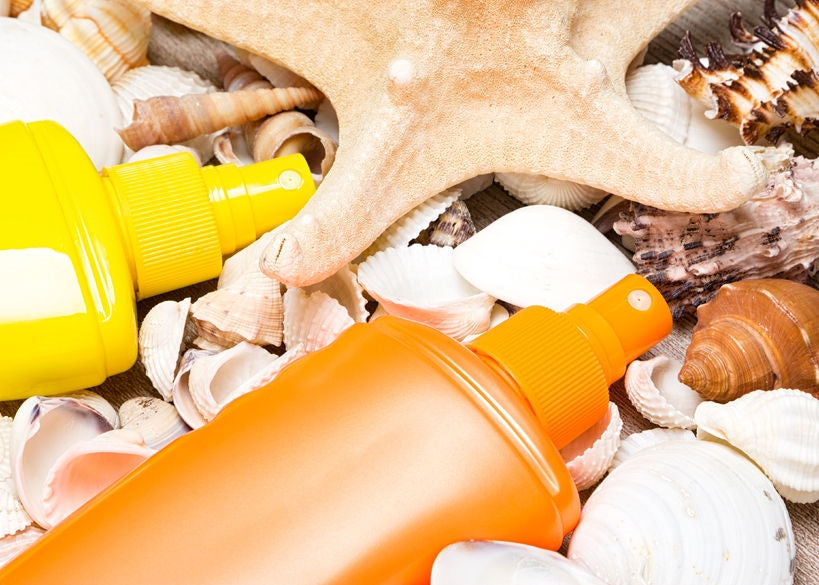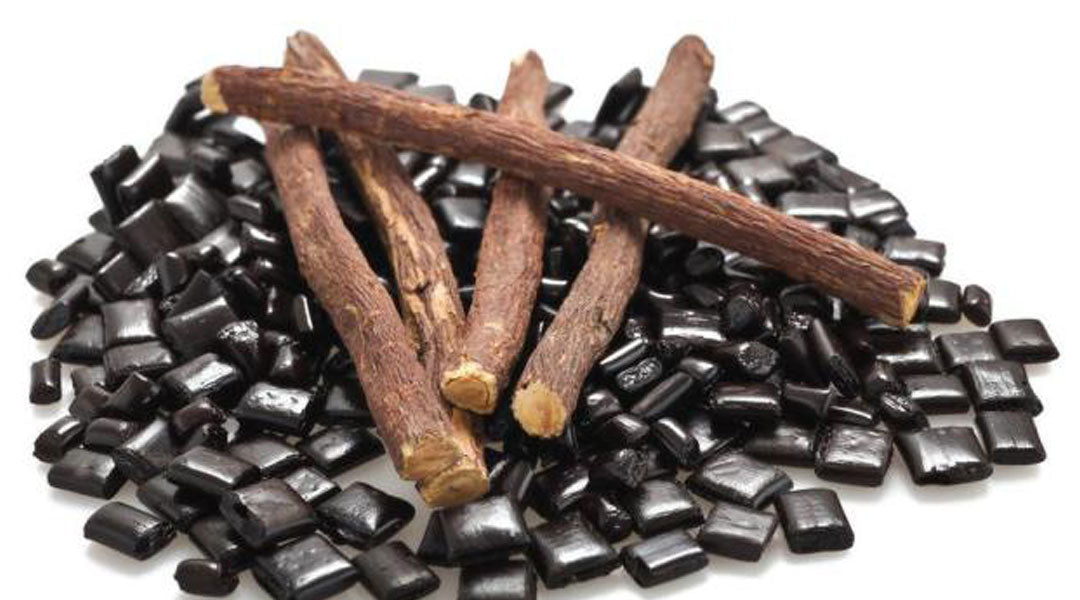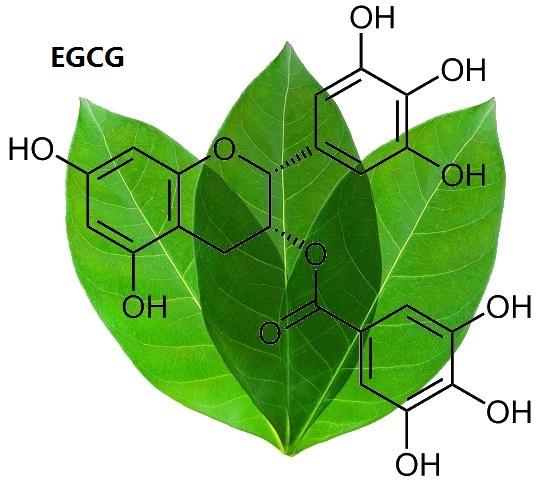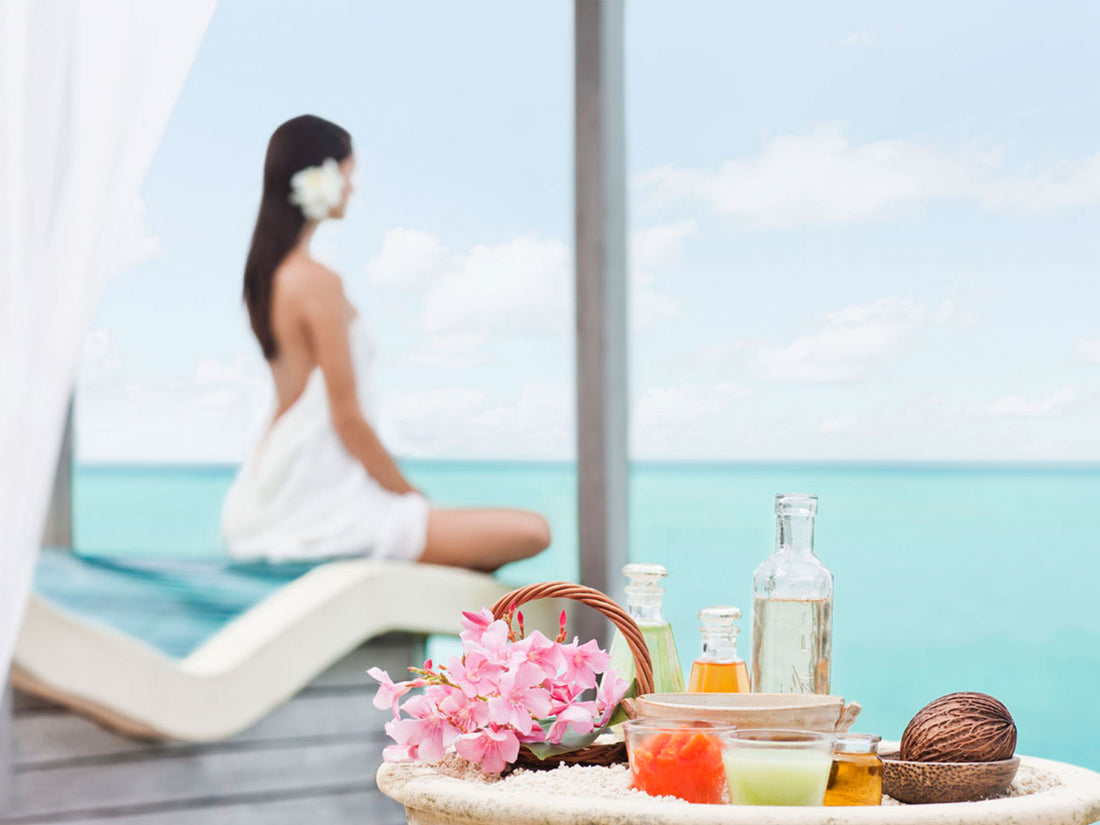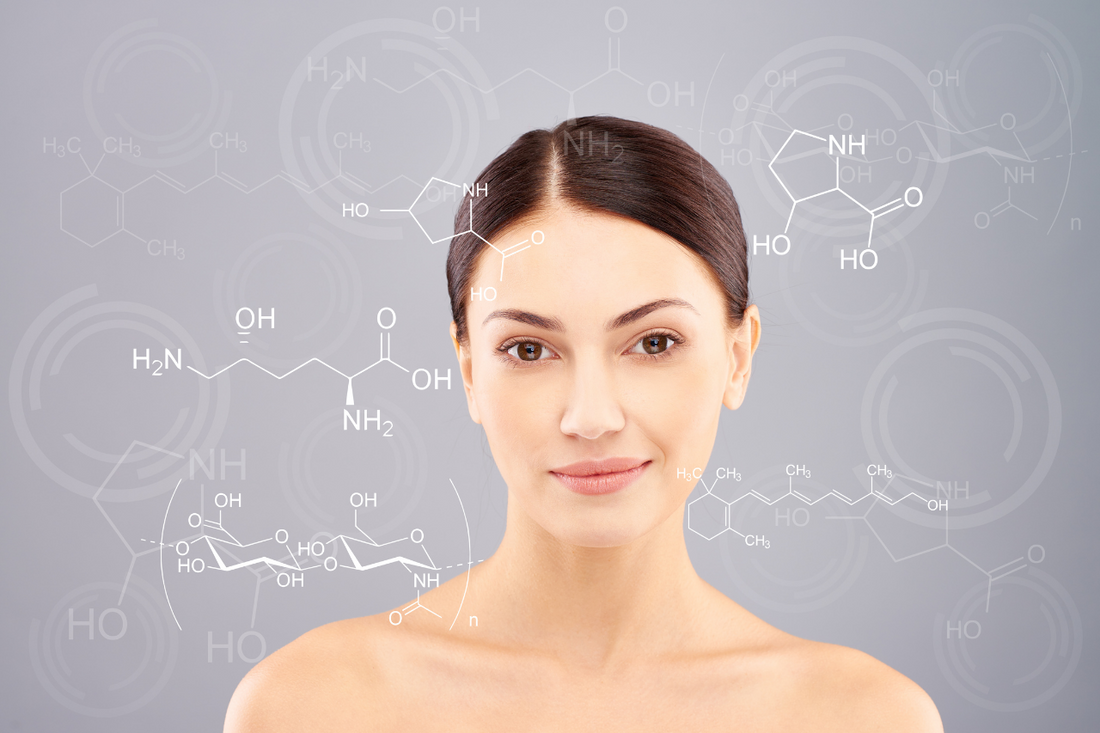Blog
Panama. First Impressions
On holidays in Panama! After a rather long flight by way of Denver (points, what can I say?), we touched down at Tocumen International Airport early on Saturday morning. We arrived at our beautiful hotel, Las Clementinas, located in Casco Viejo, the old city, to be welcomed by my parents who had arrived the night before. After a quick refresh, it was time to explore. We decided on an early lunch and headed off to the Mercado de Mariscos, where the locals go to buy seafood and dine on ceviche, fish and cervezas. Open air stalls and plastic tables made for a casual dining experience that didn’t break the bank. We all agreed that the ‘fish fry’ – deep fried fish – was the highlight of our meal. The next day, and the main reason for our Panama vacay, a tour of the Panama Canal. A visit to this engineering marvel was on my dad’s bucket list so when the opportunity arose to accompany him and my mother, we were off! Linking the Atlantic to the Pacific ocean, the canal cuts through the Continental Divide and firmly solidifies Panama’s place in global commerce. Built in 1914, an incredible accomplishment at that time, it still is a pretty awe inspiring feat. Our ‘partial transit’ tour involved passing through three locks, watching cargo and cruise ships safely pass through. It was a long day, but the experience of a lifetime. Our last two days involved exploring Casa Viejo, the old town, which is experiencing a revitalization. Colourful old buildings sit alongside ruins. The area is filled with restaurants, rooftop bars, shops and history at every turn. This was the place to soak up history, have some great cocktails and experience Panama. We visited the ruins of Panama Viejo, the city’s original site, which was sacked by pirate Henry Morgan and resulted in a move to what is now known as Casco Viejo. The Frank Gehry designed BioMuseum was a stunning piece of modern architecture, which also explained the origin of the Panamanian isthmus and its impact on the planet’s biodiversity through interactive galleries. Our last night in Panama was capped off at Maito, listed on Latin America’s 50 Best Restaurants List. We experienced a beautifully presented, inventive and delicious tasting menu in a gorgeous house. Today, we are off to visit the Highlands of Boquette, before ending our trip at the islands of Bocas del Toro. Stay tuned for Part 2!
Learn moreSunscreen Ingredients | What To Look For
When it comes to choosing a UV protective treatment, the sunscreen ingredients that make up the formulation are one of the most important factors to consider. In this post, let’s dive into the most commonly used sunscreen ingredients to determine which one may be best for you. Chemical vs Physical Sunscreen Ingredients Sun filtering agents can be broken down into one of two main categories – chemical blockers and physical blockers: Chemical blocking agents (also referred to as organic ingredients) are absorbed by the skin’s top layer and work by absorbing the sun’s rays and turning them into harmless energy. Some chemical filters can also scatter UV rays, but that isn’t their primary function. They include ingredients such as Mexoryl SX, Mexoryl XL, Tinosorb S, Tinosorb M and older one like avobenzone and oxybenzone. Physical blocking agents (also referred to as inorganic ingredients) work by sitting on top of the skin and blocking or deflecting UV rays. Studies have shown that just like organic ingredients, that they also have the ability to absorb UV rays. Zinc oxide and titanium oxide are the two physical blockers available today. Sunscreens may be comprised of either chemical or physical ingredients or may contain a combination of both. Both types offer advantages and disadvantages. Chemical Sunscreen Ingredients are capable of delivering higher UVA protection, especially with the newer filters like Tinosorb S and M and Mexoryl SX and XL. They are capable of blocking both UVA and UVB rays and are often combined together to maximize their protection. They tend to go on clear and most do not leave a white cast upon application. The downside of chemical ingredients is that they may be associated with allergic reactions, which is possibly problematic for sensitive skin. As well, several are associated with hormone disruption, with oxybenzone being the one implicated most. Two chemical sun filters – oxybenzone and octinoxate – have been associated with destruction of the coral reef and the State of Hawaii is hoping to ban sunscreens containing these two ingredients by 2021. Physical Sunscreen Ingredients are the ideal choice for individuals with sensitive skin. Because they sit on top of the skin, they are not absorbed and are therefore less likely than chemical filters to cause allergic reactions. You have likely seen zinc oxide used in formulations to alleviate rashes in babies (diaper cream), where it is incorporated for its soothing and calming properties. Sunscreens containing physical filters are also considered the product of choice for individuals with melasma (although both types are better than no sunscreen at all!). Zinc oxide blocks against the full UVA/UVB spectrum (so it can be the sole ingredient in a formulation) and titanium dioxide blocks against UVB and some UVA. If you are using a titanium dioxide based sunscreen, ensure that it is combined with ingredients that cover the full UVA spectrum. The downside of physical sunscreens is that may feel heavy (because they aren’t absorbed) and they have been known to leave a white cast on skin. This effect can be minimized by using products formulated with nanoparticles. Studies have shown that nanoparticles in sunscreen don’t penetrate into the bloodstream if applied to intact skin so there shouldn’t be any safety concerns with their application. Our Shade SPF 30 is a fantastic product to consider if you are looking for a broad spectrum physical blocking sunscreen that does not leave a white cast upon application. With the wide range of effective sunscreens today, it shouldn’t be too difficult to find one that works for you. Look for a formulation that fits your budget and your skin type without it feeling greasy or leaving you looking like a ghost. Keep these additional 3 tips in mind: Look for a product labelled as ‘broad spectrum’ to ensure protection against the full UVA/UVB spectrum Ensure you purchase something with a minimum SPF 30 for adequate protection If you are going to be active and/or swimming, select a water resistant formulation. Sunscreen is the most important product to help protect your skin against sun damage. Find one you love and use it every day.
Learn moreAnti-Inflammatory Skin Care Ingredients
In this post let’s focus on anti-inflammatory skin care ingredients following our last article on skin inflammation, what causes it and how to treat it. If your skin exhibits acne breakouts, redness or other types of discomfort, it’s sending a message that something is irritating it. Whether it’s UV exposure, allergens or something in your skin care regimen that’s throwing things off, the best thing to do is identify and eliminate the offending agent if you can. Decisive action can help to nip things in the bud before setting off an inflammatory cascade that may turn into something longer lasting that will damage skin. Corticosteroids are potent anti-inflammatory skin care ingredients available by prescription that are used to treat eczema and dermatitis. You’ll get fast results but for the most part, you shouldn’t use corticosteroids long term as they can thin skin and dampen the immune system. Lots of non-prescription anti-inflammatory skin care options are available today and they are available in a range of treatments to help all skin types. 7 Anti-Inflammatory Skin Care Ingredients Whether you need to repair or want to lessen the chances of inflammation starting in the first place, here are seven ingredients that should be on your radar: Niacinamide. Niacinamide is one of those under-valued ingredients that does so much for skin. In addition to its inflammation busting properties, it has been shown to stimulate collagen production, prevents moisture loss, increase ceramide (lipid) production and even the skin tone. Find it in our A is for Anti-Aging Serum, where it’s combined with retinaldehyde and a host of other ingredients to help deliver more youthful and vibrant skin. Chamomile. Rich in bisabolol, an anti-irritant that naturally occurs in chamomile, this herb’s healing properties help to soothe redness and rosacea and repair damaged skin. Find it in our A is for Anti-Aging Retinal Serum. Turmeric. This beautiful golden hued spice is gaining lots of attention due to its anti-inflammatory compounds, including curcumin. When ingested orally, the active components in turmeric are useful in managing arthritis. Skin care preparations that include turmeric calm and soothe skin and help to brighten the skin tone. Blue Tansy. The blue colour comes from azulene, which has anti-inflammatory properties and is helpful in battling cystic and hormonal acne. White Willow Bark. Rich in inflammation fighting compounds known as flavonoids, white willow bark has anti-inflammatory and pain relieving abilities comparable to aspirin. It is a useful addition in the battle against acne breakouts. Green Tea. Sipping on a cup of green tea provides instant zen and this vibe transfers over to skin when applied topically. Green tea is a source of epigallocatechin gallate (EGCG), a polyphenol in that delivers both antioxidant and anti-inflammatory skin care properties and is known to protect against UV damage. Find green tea extract in our Bespoke Vitamin C Serum. Licorice. Whether from the root or as an extract, licorice has been used in ancient Chinese medicine to treat inflammation for centuries. This heavy-hitter is a boon to sensitive skin prone to irritation. What are your favourite anti-inflammatory skin care ingredients?
Learn moreUnderstanding Skin Inflammation
Skin inflammation is one of the most common issues experienced when it comes to our body’s largest organ. The condition may be acute (short lived) or chronic (longer lasting). Under ideal circumstances, inflammation is actually a good thing as it’s our built in defense system, designed to protect us from invading bacteria, viruses and injuries. However, left untreated over a long time period, it can cause problems. Shop All Apothekari Acute skin inflammation results from exposure to UV rays, allergens or contact with potentially irritating ingredients like soaps and other topical treatments. Inflamed skin may have a rash, and be itchy and/or red. Symptoms tend to resolve spontaneously within a couple of weeks, especially if the irritant is removed. For the most part, acute conditions leave no serious damage behind. Chronic skin inflammation is often the result of an immune inflammatory response within the skin itself. Presenting as acne, eczema, rosacea, dermatitis and psoriasis, it tends to be longer lasting and may cause significant and sometimes serious tissue damage. Acne is an inflammatory condition, often exacerbated by the presence of bacteria. Finally, rosacea is another skin condition often triggered by inflammation from stress, food or hormones. What Causes Skin Inflammation? Skin inflammation is a complex process and researchers are still trying to understand it in full. In general, a trigger results in the production of inflammatory hormones (like cortisol), which bind to receptors on target cells and stimulate the production of further inflammatory signaling hormones. Lifestyle factors including stress, lack of sleep, poor diet, second hand smoke and sun exposure can all contribute to skin inflammation. Blood vessels may dilate, nerve cells may be activated, and some cells may leave the blood and migrate to the skin, where more inflammatory hormones along with enzymes, free radicals and damaging chemicals are produced. While the response arises as a way to protect the body against a perceived threat from the initial trigger, the end result is a large inflammatory response that can actually cause considerable damage to the skin. Treatment Conventional treatments for chronic inflammation such as eczema and dermatitis often include corticosteroids. While effective in chronic cases, corticosteroids aren’t that great in treating acute inflammation. Managing lifestyle factors – watching what you eat, getting enough sleep and trying to control stress are key. Cortisol, the stress hormone slows wound healing, hastens the breakdown of collagen and can accelerate the aging progress, leaving skin looking saggy, wrinkled and less vibrant. Exercise boosts the release of endorphins, which are anti-inflammatory. Last, sleep gives your skin a chance to heal and repair. It’s not called ‘beauty sleep for nothing! Here are 5 ways you can help fight against skin inflammation: 1. Consume Foods Rich in Anti-inflammatory Compounds This includes foods rich in omega-3 fatty acids (like fish), antioxidant rich berries, nuts and leafy greens. 2. Minimize the Consumption of Junk Food Fast food, refined carbohydrates and sugar contribute to inflammation. Food allergies may also play a factor so if you suspect your diet is the cause try to identify the allergen and eliminate it. It’s definitely worth a try! 3. Be Gentle When it comes to topical treatments, go easy. Opt for gentle cleansers (like Cloud Nine Foaming Cleansing Crème or AHA-Mazing Clean Cleanser). Don’t over exfoliate or combine the use of aggressive products all at once. Space out retinoids, alpha hydroxy acids and low pH Vitamin C. Rethink feeling ‘squeaky clean’, which often results in dry and irritated skin. If skin feels itchy and irritated or appears red, take a product break. 4. Wear Sunscreen Every day. UV rays are a source of free radicals, which can lead to inflammation. 5. Sleep Well. Exercise. Manage Stress. Since stress is one of the main reasons for skin inflammation, stress reduction is key. Exercising and sleeping better are two ways to help manage stress. Whether it’s short-term inflammation (like hives, a rash or sunburn) or the cumulative effect of chronic assaults, inflammation does take a toll on the skin. A weakened skin barrier function can lead to trans-epidermal water loss, leaving skin feeling dry and more sensitive. The earlier you tackle it the better. In our next post, we discuss some of the best anti-inflammatory ingredients you can use to help skin heal. Stay tuned!
Learn moreAlpha Bisabolol and Skin
You’ve likely heard of ingredients including Vitamin C, retinoids and peptides, ingredients essential to great skin, but have you heard of alpha bisabolol? Shop A Is for Anti-Aging Serum (Our Retinoid Formulation) What is Alpha Bisabolol? Alpha bisabolol, often shortened to bisabolol, is also known as levomenol, a naturally occurring compound that is the primary constituent of the essential oil from German chamomile. Bisabolol may also be manufactured synthetically, where it is chemically identical to that found in nature. It’s one of those ingredients that is a heavy hitter when it comes to skin care yet sits quietly in the background doing its thing, without drawing much attention to itself. Alpha Bisabolol has been shown to have anti-irritant, anti-inflammatory and anti-microbial features. It also can help to increase the absorption of certain ingredients. It is high in panthenol, a B vitamin, which assists with helping to heal and moisturize skin and hair. For centuries, bisabolol has been used in skin care preparations due to its healing properties. And, it’s weak, sweet floral aroma makes it a useful addition to fragrances. What does Alpha Bisabolol Do? Historically, people have used alpha bisabolol medicinally for its anti-irritant, anti-inflammatory and anti-microbial properties. In cosmetics, it performs as a skin conditioning agent where it enhances the appearance of dehydrated or damaged skin by reducing dryness and flakiness and restoring suppleness. Because of its high panthenol concentration, it can effectively stimulate and promote the skin’s healing process and encourage healthy hair growth. Its ability to enhance the penetration of other cosmetics ingredients makes it a useful addition to treatments that contain other actives including antioxidants, peptides and retinoids. Its skin soothing and anti-inflammatory properties are beneficial not only when it comes to wound healing, but also in calming irritated skin. Because it has so many beneficial traits, you can find alpha bisabolol in a range of products including serums, moisturizers, sunscreens, cleansers, and makeup. I’m a big fan of this ingredient and if it were possible, I may want to include it in everything! For now, look for it in our A is for Anti-Aging Serum, where it’s included for its anti-inflammatory, wound-healing, and skin soothing properties.
Learn moreHow to Layer Skin Care Treatments
A topic that seems to generate a lot of confusion is how to layer skin care treatments. In a world of serums, essences, concentrates, emulsions, moisturizers and toners, the confusion probably isn’t all that surprising. I hope that this post helps to clarify how to do it right. How to Layer Skin Care Treatments Right While it is possible to layer most skin care products, there are a few steps that will help you to do it properly: Start With a Clean Canvas. Before applying any products to your face, cleanse it to remove dirt and make-up. This helps to create a clean base ensuring that the products you apply will be absorbed by the skin. Apply in the Correct Order. Apply treatments in order of weight and consistency, starting with the thinnest (runniest) in texture first. If you plan on applying two products similar in consistency, apply the one that addresses you major skin concern(s) first. Don’t Apply Too Much. Your skin can only absorb so much so start with a small amount and gently press into the skin. You shouldn’t have visible product remaining on the surface before applying the next one. Don’t Apply Too Many Products. A general rule of thumb is to layer up to 3 products, waiting about a minute between applications. This will allow products to be absorbed, leaving skin looking smooth and balanced vs gooey and messy. Finish off with Sunscreen. Sun protection should be the last thing you apply to skin. Sunscreens earn their SPF rating without any product going on over them. While this would be the way to do it in an ideal world, many of us use foundation and make-up. If that’s the case, apply it over your sunscreen. Here’s an example of how to layer skin care products: If you like to use toners, apply this first. Follow with a target serum treatment like A is for Anti-Aging (PM) or Bespoke Vitamin C Serum (AM). Moisturize (Daily Infusion Moisturizer) or use an oil to seal everything in. Sunscreen (AM) goes on last. This step makes four so if you use all the products above, you may want to consider removing one. I hope this makes sense and helps you to use your products for maximum benefit.
Learn moreBusiness 101 - The Importance of Teamwork
As a small business owner, the importance of teamwork can’t be emphasized enough. While I’ve had to wear many (MANY) different hats over the years, I know that building a successful business does not come via one’s hands alone. During the early days of building my first online wellness business, I did everything. I answered phone calls, packed and shipped orders, replied to emails, maintained inventory, wrote blog posts and newsletters and worked social media. I’d worry about paying the bills. Money was hard to come by, but making the leap to hire someone to help me in the day to day management of the business was one of the best decisions I ever made. By taking every day activities like shipping, customer service and inventory management off my plate, I was able to focus on the task of building the business. I left the accounting to an accountant. And, I hired someone to help with social media. While it seemed that I was spending money that I didn’t have, hiring an employee and other specialists was one of the best business decisions I made. Delegation is Key As a bit of a self-admitted control freak, delegation did not come easily. The right way was to do it perfectly and to do it my way. I soon discovered that this was a recipe for disaster. While good systems and best practices are essential to business success, people often get to the same endpoint in different ways. If you hire well – intelligent, motivated and resourceful people – things get looked after just as well and often better, than one person trying to juggle too many things at once. Team members who understand the direction of the company, its processes and its hardships take ownership in a way that allows a company to flourish. In order to thrive, a business needs to rely on a group of people who look after different aspects of the company. Teamwork ensures for a division of labour that helps to maximize efficiencies, allow specialists to do what they do best and for everything to get accomplished in the best possible way. Today, I work with a range of people who are employees, contractors and consultants. Customer Service Specialists Social Media Manager/PR Consultant Accountant Internet Specialists Photographers/Videographers Writers Their focus on specific activities frees me to the job of building Apothekari. The old adage “Two heads are better than one” exists for a reason. It’s true! Effective teamwork fosters creativity, builds trust, blends complementary skills and promotes a wider sense of ownership. It’s a business lesson I’ve learned well.
Learn moreBenefits of Green Tea EGCG: New Study
It’s well known that green tea, and more specifically, one of its active components, EGCG (Epigallocatechin-3-gallate) delivers a myriad of benefits to skin. Green Tea Skin Benefits Green tea itself contains polyphenols, high antioxidant nutrients which help to protect the skin against free radical damage. Studies have shown that it also: Protects against the development of skin cancer Reduces sebum production, thereby minimizing the development of acne Minimizes rosacea Slows down the skin aging process. New Study on EGCG in Green Tea A study recently published in the International Journal of Molecular Sciences, points to new skin care benefits attributed to EGCG. According to the article, the benefits extended beyond that of its antioxidant and inflammatory properties and showed that it contributed to an increase in skin hydration. The authors examined EGCG’s effect on hyaluronic acid synthase (HAS) and hyaluronidase (HYAL) gene expression, as well as antioxidant and anti-pigmentation properties. Benefits of EGCG for Skin Care EGCG was shown to increase the expression of skin’s natural moisturizing factor-related genes, among other activities. In addition, its antioxidant activity helped to prevent radical-evoked apoptosis (cell death) and it reduced melanin secretion. The study results suggest that EGCG could be used as a cosmetic ingredient for skin hydration, moisture retention and the prevention of wrinkle formation. Our customers are on to something as they already rave about the results they are seeing upon using our Bespoke Vitamin C Serum (which contains green tea extract along with L-ascorbic acid and other skin beneficial ingredients). Given these latest results, it’s not surprising at all!
Learn moreDairy Face
Dairy Face is a term coined by a UK Naturopath—and, it’s been making the waves over the past few years. The thinking is that your skin is related to your digestive health, so you might see certain parts of your face reacting to stress in your gut, depending on the types of food or drink you are intolerant to, in this case dairy. Shop All Apothekari In previous posts, we’ve discussed Other “faces” described by the naturopath: Gluten Face – Characterized by a range of symptoms including psoriasis, eczema, acne or dry skin. Sugar Face – Sugar consumption reacts with proteins, creating elements called advanced glycation end-products (AGEs) leading to skin that appears wrinkles, saggy and gaunt. Wine Face – Typically associated with individuals who consume one or two glasses of wine or other alcohol most nights of the week, skin becomes dehydrated, making fine lines and wrinkles look worse. The face may become red and make the individual appear older. Is Dairy Face Real? Your skin reacts to what you put inside your body, and in some cases—especially if you are sensitive or allergic to a specific food—your diet can wreak havoc on your skin. When it comes to dairy face, milk, cheese, and other dairy products could possibly be the main culprits for several unwanted changes to your skin: Swollen eyelids Bags and under eye dark circles Small white spots and Bumps on the chin. It’s thought that lactose—the sugar found in dairy products—intolerance contributes to the cause. An intolerance can affect the immune system leading to inflammatory responses in the body. So the result is puffy eyes and under eye bags. Dairy is also thought to increase the production of sebum (oily secretions) leading to acne. Additionally, hormones in milk may result in more inflammation including premature skin aging. How Long Does It Take to Get Rid of Dairy Face? If you suspect you may have Dairy Face, consider that your milk or cheese addiction may be the cause. You can try cutting out dairy entirely, as many people do. There aren’t any major risks associated with eliminating dairy from your diet as long as you follow healthy eating principles for most of the time. And calcium? The daily recommended allowance isn’t as high as many of us assume and can be obtained through eating foods such as fish, beans, kale, spinach and hummus. If you have concerns, speak to your physician.
Learn moreWhy Your Spring Skincare Routine Needs Sunscreen
Today, March 20th, marks the Spring Equinox and we’re sharing tips to help you transition to a spring skincare routine. More in this post. How Can I Take Care of My Skin in Spring? While springtime sun exposure is less dangerous than that in the summer, you still need to be concerned about the potential damage from the sun’s UVA and UVB rays. UVB rays contribute to sunburn (along with some types of skin cancer) while UVA rays penetrate deeper and contribute to signs of skin aging including wrinkles, sagginess, age spots and with skin cancer. For this reason, it’s important to protect your skin during the spring and all year long. It is also a good time to take stock of the products you’re using in preparation to transition over from winter skin care. 5 Reasons Your Spring Skincare Routine Needs Sunscreen It’s not only spring, but year round that you need to pay attention for healthy skin. The main culprit is sun damage and these 5 reasons are why your spring skincare routine must include sunscreen: More Than 3.5 Million New Skin Cancer Cases Each Year. In the United States alone, more than 3.5 million cases of skin cancer are diagnosed each year. Risk factors for all types of skin cancer include skin that burns easily; blond or red hair; a history of excessive sun exposure, including sunburns; tanning bed use; immune system-suppressing diseases or treatments; and a history of skin cancer. People with more than 50 moles, atypical moles, or large moles are at an increased risk of developing melanoma, as are those with light skin and freckles, and those with a personal or family history of melanoma. Skin Cancer Can Affect Anyone. Regardless of skin color, skin cancer can strike anyone. In patients with skin of colour, it is often diagnosed in its later stages, when it’s more difficult to treat. Research has shown that patients with skin of colour are less likely than Caucasian patients to survive melanoma. They are also more prone to skin cancer in areas that aren’t commonly exposed to the sun, like the palms of the hands, the soles of the feet, the groin and the inside of the mouth. They also may develop melanoma under their nails. 90 Percent of all Skin Cancers Attributed to Excessive Sun Exposure. Research indicates that UV light from the sun and tanning beds can both cause melanoma and increase the risk of a benign mole progressing to melanoma. Increasing intermittent sun exposure in childhood and during one’s lifetime is associated with an increased risk of squamous cell carcinoma, basal cell carcinoma and melanoma. Even one blistering sunburn during childhood or adolescence can nearly double a person’s chance of developing melanoma. Five or more between ages 15 and 20 increases one’s melanoma risk by 80 percent and nonmelanoma skin cancer risk by 68 percent. Springtime Sun is Not Safe. In fact, it is sometimes considered more dangerous because the cooler temperatures may fool you into thinking you aren’t getting much sun exposure. Springtime is a good time to purchase a new bottle of sunscreen. Sunscreens expire and can lose their effectiveness after being opened for a year or so. Check the expiry date on your sunscreen and replace if necessary. Daily Sunscreen Use Cuts the Incidence of Melanoma. Research in 2010 showed a reduction by 50%. Choose a sunscreen with an SPF of at least 30 and make sure you apply enough. In general, use ¼ teaspoon for your face alone. From head to foot (assuming you’re wearing a bathing suit), apply the equivalent of a shot glass full of sunscreen. Sunscreen breaks down when it is exposed to sunlight, sweat or water so it should be reapplied every two hours or after you are exposed to water or sweating heavily. Sunscreen is an Essential Part of Your Spring Skincare Routine While it’s always important to cleanse, protect skin with antioxidants, repair with retinoids and moisturize, sun protection is #1. Follow these tips to get the most out of sun protection. Practice Sun Smart Habits. Since UV light exposure is the most preventable risk factor for all skin cancers, the American Academy of Dermatology encourages everyone to practice safe habits: Seek shade and avoid sitting directly in the sun between 10:00 AM and 4:00 PM Wear protective clothing, including long sleeves and legs, wide-brimmed hats, Use a sunscreen with an SPF of 30+. Avoid tanning beds or sun lamps, which are sources of artificial UV radiation that may cause skin cancer. Protect your Eyes. Between five and 10 percent of skin cancers occur on the eyelids according to the Skin Cancer Society. Use UV-blocking sunglasses. Large frames or a wrap-around styles are best. Skin Cancer is Curable. Basal cell and squamous cell carcinomas, the two most common forms of skin cancer, are highly curable if detected early and treated properly. The vast majority of skin cancer deaths are from melanoma, which has a five-year survival rate of 99 percent for people whose melanoma is detected and treated before it spreads to the lymph nodes. Get Checked Out. The American Academy of Dermatology encourages everyone to perform skin self-exams to check for signs of skin cancer and get a skin exam from a doctor. A dermatologist can make individual recommendations as to how often a person needs these exams based on risk factors, including skin type, history of sun exposure and family history. Skin cancer warning signs include changes in size, shape or color of a mole or other skin lesion, the appearance of a new growth on the skin, or a sore that doesn’t heal. If you notice any spots on your skin that are different from the others, or anything changing, itching or bleeding, the American Academy of Dermatology recommends that you make an appointment with a board-certified dermatologist. If you’re anything like me, it’s been a long, cold and grey winter and you’re hungry for springtime sun! Wear your sunscreen, put on your favourite pair of sunglasses and enjoy. Let us know if you have any spring skincare routine tips to share.
Learn moreNew Ways to Enjoy the Spa
Who doesn’t love going to the spa? If this is one of your favourite ways to indulge, then you may want to know about new concepts that can help to take your outing up one level. Derived from the name of the town of Spa, Belgium, whose name originated in Roman times, the word spa itself denotes “fountain”. The town is famous for its natural mineral springs, and is also the location of a mineral water producer, whose mineral water is exported worldwide. Spa therapies have existed since the classical times when taking bath with water was considered as a popular means to treat illnesses. Forms of ritual purification existed among the Native Americans, Babylonians, Egyptians, Greeks, and Romans and today, this ritual carries on through the religious ceremonies of Jews, Muslims, Christians, Buddhists, and Hindus, which reflect the ancient belief in the healing and purifying properties of water. Lately, novel twists on the spa have been cropping up: 1. The Beer Spa Home to Spain’s first beer spa, the Granada Beer Spa provides beer baths to relax muscle tension, prevent skin aging, reduce stress and help eliminate toxins, according to the venue. Baths include yeast, hops, malt and cinnamon, which the skin absorbs in 20 minutes. Additionally, each bath offers beer taps on the side. The spa also offers body treatments with beer. Apparently the concept is catching on as there are plans to open locations in Madrid, Valencia and Marbella, amongst others. 2. Candy Spa This pop-up salon/spa, Sweet ReTREAT, was held in New York City on February 13th and 14th by Mars Wrigley. Inspired by the company’s chocolate and candy, the pop-up included treatments themed to their top confection brands including Dove, Twix, Skittles and Starburst. Art installations and a candy beverage bar were part of the event. The bonus? It was all free! If you missed the pop-up this year, you can keep your fingers crossed that the company will host another one next year. 3. Gin Spa Only in Britain! Located in Glasgow, Scotland, the Gin Spa brings together a deep understanding and knowledge of gin botanicals, with a focus on crafting superb customer experiences. Treatments include massages, facials and nails and a gin cocktail is included with each treatment. 4. Salt Spa Set to open soon, Speleos Salt Spa, North Hampton will focus on halotherapy, or using salt for therapeutic purposes.The spa will use active and passive forms of halotherapy alike, and will utilize a halo generator to crush pharmaceutical grade salt. Spa going, for me, is a special occasion thing. I’ve yet to try any of the four listed above, but two that I’ve been to most recently include: Spa Scanidave. A traditional Scandinavian baths experience set in a spruce and cedar forest in the mountains. Focusing on hydrotherapy, one can indulge in a range of hot and cold water treatments – steam baths, saunas, Nordic waterfall and showers, cold plunge baths and solariums and outdoor fireplaces. Absolutely magical, especially if you catch it while the snow is falling. Miraj Hammam Spa. This exotic oasis lets you indulge in traditional Middle Eastern treatments including Hammam (steam room) & Gommage (exfoliation). The experience leaves skin feeling soft and supple and you feeling most relaxed. You can even spa at home. Try incorporating Apothekari body treatments into your daily routine for an indulgent experience that won’t break the bank. Do you do spa?
Learn moreHyaluronic Acid Love
When it comes to effective skin care ingredients, hyaluronic acid skin care products (along with related sodium hyaluronate) rank right up there with other superstars including l-ascorbic acid, retinoids and sunscreen. This naturally occurring substance is a carbohydrate that is found in our joints, our eyes and connective tissue, along with our skin. It helps to lubricate things and also has an immense capacity to attract and hold large quantities of moisture. It can do this without the skin receiving too much water, which can be just as bad for skin as too little. Aging skin loses its ability to maintain moisture, resulting in the visible loss of firmness, pliability, and plumpness. Hyaluronic acid acts as a humectant (attracts moisture from the environment into the skin) and replenishes moisture that is essential to the appearance of younger-looking, healthy and supple skin. Other ingredients, including glycerin and propanediol also do this, but hyaluronic acid is far more effective, capable of holding 1000 times its weight in water! The result is skin that looks and feels softer, smoother and hydrated, with a diminished appearance of fine lines and wrinkles. What about sodium hyaluronate? This salt form of hyaluronic acid also acts as a humectant but is more stable and less likely to oxidize. It also has a lower molecular size, helping it to penetrate deeper into the skin. Chemists, however, have developed low molecular weight versions, which solves this issue. The key is not to go too low with the molecular weight as this can lead to skin inflammation. Hyaluronic Acid Skin Benefits – More… You don’t need super high concentrations of either sodium hyaluronate or hyaluronic acid. Concentrations of 2% and less deliver great results so don’t be surprised to see them listed at the end of the ingredient list. Higher concentrations can conversely, dry the skin. While hydration is the main reason to incorporate hyaluronic acid, it also can: Increase skin elasticity Fight inflammation, thereby helping to soothe skin irritations such as atopic dermatitis and rosacea as well Deliver antioxidant benefits, helping to protect skin against free radical damage. Useful for all skin types, we love hyaluronic acid for its multi-tasking ability. Oily or combination skin types benefit from non-greasy hydration. Because it is so gentle, even sensitive and redness prone skin is able to tolerate it. Find it as sodium hyaluronate in our Bespoke Vitamin C 15% Serum (10% too).
Learn more

